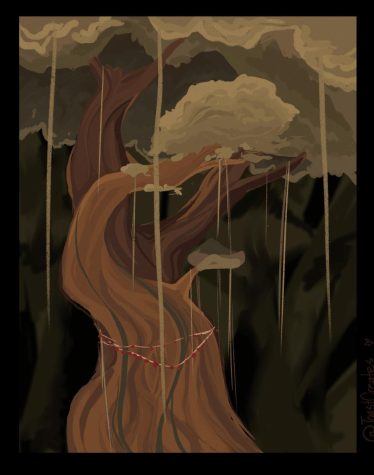How Do We Define Art?
Art can be defined in many different ways, but does art created by AI technology fit the definition?

Our eyes have been glued to the film screens showing incredible possibilities of the future, like robots, for decades; now, this fiction is becoming a reality. Although it is not technically a robot, artificial intelligence (AI) uses the same brain and concept as a robot, allowing it to have advanced capabilities. AI is a program that can collect data fast and is able to learn based on patterns from the information. This is essentially a way to try to mimic human intelligence and it is becoming widely accessible with websites allowing you to use pre-programmed AI.
The most notable AI website is ChatGPT. One of the best artificial intelligence available to the public, ChatGPT writes papers on different subjects based on just a word or a sentence. This has grown very popular, getting a lot of recognition on the internet for being able to do complex things that we only believed humans could do writing papers, solving complex issues or even coding. However, AI technology goes even beyond words.

DALL-E, under the same company as ChatGPT, is an AI art generator and has the ability to produce any image according to words or images the user inputs. It has ways to interpret the words, compare and contrast with other images, and then create a similar, but a unique image. This poses challenges to artists, it may take jobs away from real artists or even steal peoples work with no work. If companies are trying to budget but still need art designs they could easily use AI as a solution to not have to pay an artist. Not only can this cut costs but it takes one to five minutes to create an image.
Maia Geniso, an artist who mainly specializes in digital art, found this type of AI while scrolling through social media. The new popular filter that uses your face to turn into an anime or fantasy character has been a widespread trend throughout social media. This is a clear example of AI art: it creates a new image with your facial features into an anime style with similar features of yourself. The development of AI technology leads us to consider whether AI-generated art counts as art, but that first raises the question, what is art?
For Genisio, art is a way to put her feelings and thoughts into physical form, like the ideas that float around in her head that come to life with art. Felix McKenna, an artist who specializes in digital art, shares the sentiment that art is a form of expression for humans.
Both Genisio and McKenna feel that art is a form of expression that comes from humans. This connects to the definition of art by the Oxford Dictionary, which is “the expression or application of human creative skill and imagination, typically in a visual form such as painting or sculpture.” Since art is defined as originating in the human mind, the work of AI can not be considered art.
Throughout history, we have seen many things change with the advancement of technology. This is evident even now, as we see the definition of art changing before our eyes. In the Renaissance Era, art that represented an event was more valuable than art based on creative thoughts, according to Dr. Robert Glass. Now, we center art that is emotional, instead of solely physical, which is seen in Geniso and Mckenna’s definitions of expressive art.
We are in the midst of a time where the intelligence of technology is increasing exponentially. This has clear implications for our society and culture, including how we think about art. For right now, AI art cannot be considered on the same level as art created by humans, as it does carry the same weight.
“Art is a reflection of the human mind and human emotions, so I don’t think AI can be [art],” Genisio said.








